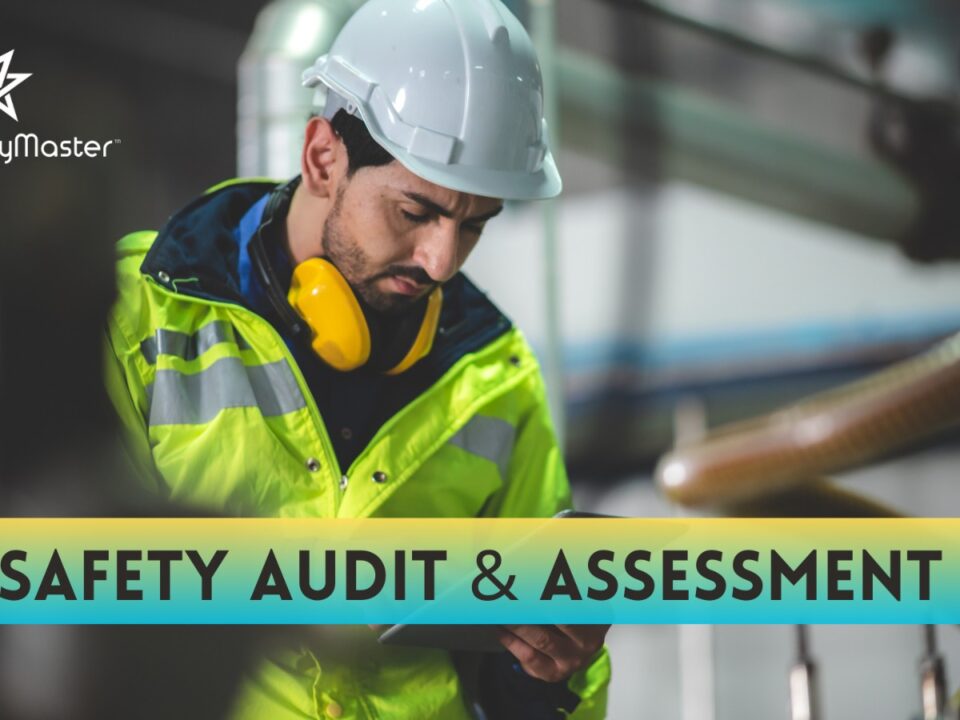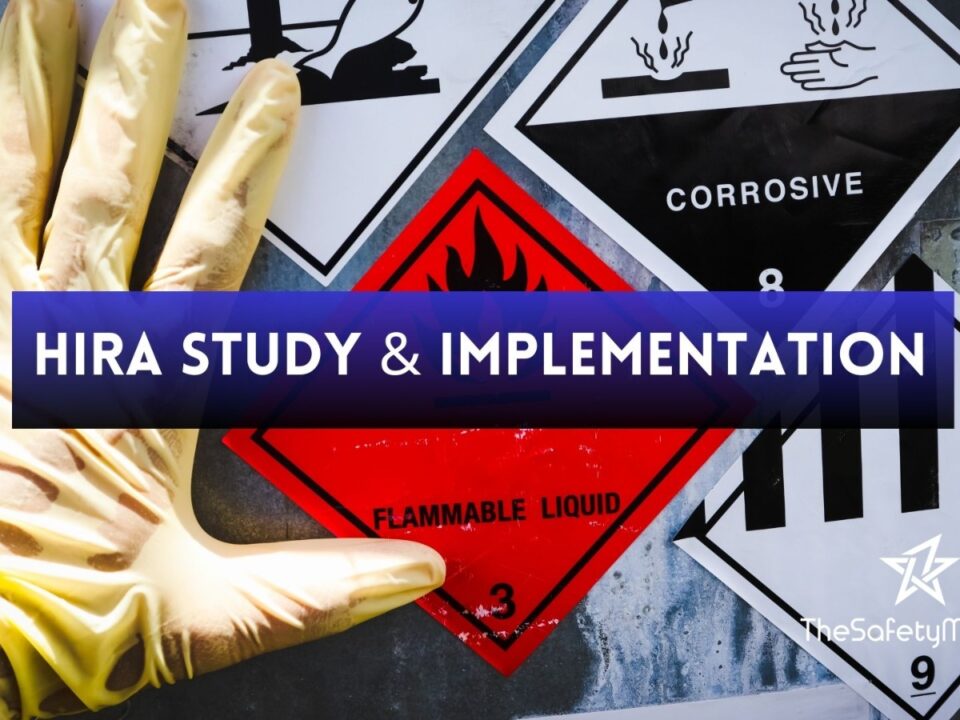Compliance with BIS 14489 Safety Audit Guidelines: A Crucial Step towards Preventing Accidents and Injuries in Industries

Mitigating Fire Risks in the Rising Electric Vehicle Manufacturing Sector in India
October 6, 2023
The Ultimate Guide to Implementing an Effective Safety Management System: A Step-by-Step Approach
October 7, 2023In this article, we delve into the critical topic of compliance with BIS 14489 Safety Audit Guidelines, a step that cannot be overlooked when it comes to preventing accidents and injuries in industries. The need for stringent safety measures has become more evident than ever, with the potential risks and hazards that workers face on a daily basis. We will shed light on the importance of adhering to these guidelines, explore key aspects of the safety audit process, and emphasize the positive impact it can have on overall workplace safety. Stay tuned for invaluable insights, practical guidance, and a path towards creating a safer work environment. Discover how you can safeguard your employees and your organization’s future.
Introduction
Industries play a vital role in our society, driving economic growth, providing employment opportunities, and fuelling innovation. However, amidst the hustle and bustle of industrial activities, there looms a persistent threat – the risk of accidents and injuries. Every year, numerous lives are affected due to workplace mishaps that could have been prevented. In order to address this pressing issue and ensure the safety of workers across various industries, compliance with BIS 14489 Safety Audit Guidelines is paramount. These guidelines serve as a comprehensive framework that helps organizations in identifying potential hazards, implementing preventive measures, and fostering a culture of safety. By adhering to these guidelines, industries can significantly reduce the likelihood of accidents and injuries
Understanding BIS 14489 Safety Audit Guidelines
The BIS 14489 Safety Audit Guidelines serve as a comprehensive framework for ensuring safety standards in industries. These guidelines, developed by the Bureau of Indian Standards (BIS), provide a systematic approach to assess, monitor, and improve safety measures within organizations. By understanding these guidelines, industries can create a safe working environment that minimizes the risk of accidents and injuries.
These guidelines encompass various aspects of safety management, including hazard identification, risk assessment, emergency preparedness, and employee training. They emphasize the need for regular audits to evaluate compliance with safety protocols and identify areas for improvement. Understanding the intricacies of BIS 14489 Safety Audit Guidelines allows organizations to implement effective safety strategies that not only protect their workforce but also enhance productivity and overall performance.
Compliance with these guidelines is not just about adhering to legal requirements; it is about prioritizing human life and well-being. By embracing these standards, industries demonstrate their commitment to fostering a culture of safety. The understanding of BIS 14489 Safety Audit Guidelines enables organizations to proactively address potential risks, empowering employees with knowledge and tools necessary for accident prevention. Ultimately, this leads to a positive work environment where individuals can thrive without compromising their health or jeopardizing their lives.
Importance of Compliance with BIS 14489 Safety Audit Guidelines
Embracing compliance with BIS 14489 Safety Audit Guidelines is an indispensable endeavor for industries committed to safeguarding the well-being of their workforce. These guidelines provide a comprehensive framework that ensures effective safety management systems are in place, minimizing the risk of accidents and injuries. By adhering to these guidelines, industries demonstrate their dedication towards creating a safe and secure work environment.
Compliance with BIS 14489 Safety Audit Guidelines not only protects employees from potential harm but also fosters a culture of trust and care within the organization. It serves as a powerful reminder that the welfare of individuals at every level should be prioritized above all else. By striving for compliance, industries promote a harmonious atmosphere where workers feel valued and empowered, enabling them to contribute their best efforts towards achieving organizational goals.
Furthermore, compliance with these guidelines helps businesses build a reputation as responsible corporate citizens. It reassures stakeholders, customers, and investors that safety is not just an afterthought but an integral part of their operations. This commitment can enhance trust in the brand and attract partnerships that align with sustainability objectives. Compliance becomes not just an obligation but also an opportunity for growth and advancement in today’s competitive landscape.
In summary, embracing compliance with BIS 14489 Safety Audit Guidelines is both morally imperative and strategically beneficial for industries aiming to prevent accidents and injuries. By adhering to these guidelines, organizations create a safer work environment while simultaneously enhancing their reputation as socially conscious entities focused on employee well-being.
Key Components of BIS 14489 Safety Audit Guidelines
1. Risk Assessment: The first and foremost component of BIS 14489 Safety Audit Guidelines is conducting a thorough risk assessment. This involves identifying potential hazards, evaluating their severity, and determining the likelihood of occurrence. By systematically analyzing risks, industries can create targeted strategies to mitigate them effectively.
2. Safety Management Systems: Another vital aspect of these guidelines is the establishment of robust safety management systems (SMS). This includes implementing policies and procedures that promote a culture of safety throughout the organization. SMS ensures that risk control measures are in place, emergency response plans are developed, and regular inspections and audits are conducted.
3. Training and Competency Development: Recognizing that well-trained employees are key to ensuring safety in industries, BIS 14489 emphasizes the importance of training programs. These guidelines require industries to provide comprehensive training to their workforce on safety procedures, hazard identification, emergency response protocols, and the proper use of personal protective equipment (PPE).
Compliance with these key components creates safer working environments where risks are proactively identified and mitigated through effective management systems and well-trained employees. By adhering to these guidelines, industries can achieve a high level of operational excellence while safeguarding their most valuable asset – their workforce.
Benefits of Implementing BIS 14489 Safety Audit Guidelines
Implementing BIS 14489 Safety Audit Guidelines brings forth a myriad of benefits that contribute to the overall well-being of industries and their workforce. Firstly, adherence to these guidelines ensures a proactive approach to safety, mitigating potential hazards and minimizing the occurrence of accidents. By identifying and rectifying safety gaps, industries can foster a culture where employees feel secure and valued, resulting in increased productivity and job satisfaction. Furthermore, compliance with BIS 14489 Safety Audit Guidelines promotes transparency and accountability within organizations. Regular audits provide an opportunity for companies to assess their safety protocols objectively, encouraging open communication between management and workers. This collaborative environment empowers employees to voice safety concerns without fear of repercussions, fostering a sense of trust and unity among all stakeholders.
The implementation of these guidelines also strengthens the reputation of industries in terms of social responsibility. By prioritizing the well-being of their workforce through rigorous safety measures, organizations demonstrate their commitment towards creating a safer society at large. This not only attracts top talent but also cultivates positive relationships with customers, suppliers, and regulatory bodies who view these efforts favorably.
In essence, embracing BIS 14489 Safety Audit Guidelines goes beyond mere compliance – it paves the way for a culture that values human lives above all else. By investing in effective safety measures, industries not only protect their employees from harm but also reap numerous advantages like enhanced productivity, improved communication channels, heightened reputation as responsible corporate citizens thus creating an environment where everyone thrives harmoniously.
Ensuring Workforce Safety through Compliance with BIS 14489 Safety Audit Guidelines
Ensuring Workforce Safety through Compliance with BIS 14489 Safety Audit Guidelines: By adhering to the comprehensive guidelines outlined in BIS 14489 Safety Audit, industries can effectively prioritize and ensure the safety of their workforce. This framework provides a systematic approach that encompasses various aspects of safety management, including hazard identification, risk assessment, emergency preparedness, and employee training. Implementing these guidelines creates a safety-conscious culture within organizations, where employees feel confident and protected while performing their duties.
One significant aspect emphasized by BIS 14489 is the importance of conducting regular safety audits. These audits serve as a proactive measure to identify any potential hazards or shortcomings in existing safety protocols. By thoroughly examining workplace conditions and practices, companies can identify areas that require improvement, such as updating equipment or implementing additional safety measures. Through this continuous evaluation process, organizations can stay one step ahead of potential risks and ensure a safer working environment for their employees.
Compliance with BIS 14489 Safety Audit Guidelines also promotes open communication channels between management and staff regarding safety concerns. It fosters an atmosphere where employees feel encouraged to report any unsafe conditions or incidents promptly. This collaboration ensures that potential hazards are addressed promptly and appropriate measures are taken to mitigate risks effectively. As a result, workers develop a sense of trust in their employers’ commitment to their well-being while contributing to an overall positive work environment.
Preventing Accidents and Injuries in Industries through BIS 14489 Safety Audit Guidelines
In the complex and hazardous world of industries, accidents and injuries pose significant threats to both workers and the overall productivity. However, through strict adherence to BIS 14489 Safety Audit Guidelines, these potential disasters can be effectively prevented. By implementing a comprehensive safety management system that aligns with these guidelines, industries can create a safe working environment that mitigates risks and protects their workforce. The BIS 14489 Safety Audit Guidelines provide a framework for identifying potential hazards, assessing associated risks, and implementing necessary preventive measures. This ensures that industries establish robust safety protocols, such as regular equipment maintenance, proper training programs for employees, and effective emergency response plans. Adhering to these guidelines not only safeguards the well-being of workers but also contributes to increased productivity by minimizing downtime caused by accidents or injuries.
By proactively integrating the BIS 14489 Safety Audit Guidelines into their operations, industries demonstrate a commitment towards prioritizing safety at all levels. This approach fosters a positive work culture where employees feel valued and protected. Consequently, it enhances morale and job satisfaction while reducing absenteeism due to workplace injuries. Moreover, when workers witness management’s dedication to their well-being through compliance with these guidelines, they are more likely to be proactive in reporting potential hazards or suggesting improvements in safety protocols. This collaborative effort cultivates an environment of continuous improvement towards preventing accidents and injuries in industries
Risks and Consequences of Non-compliance with BIS 14489 Safety Audit Guidelines
Risks and Consequences of Non-compliance with BIS 14489 Safety Audit Guidelines: Disregarding the importance of complying with BIS 14489 Safety Audit Guidelines can result in dire consequences for industries. Firstly, failing to adhere to these guidelines puts the safety and well-being of workers at risk. Without proper safety measures in place, accidents and injuries become more prevalent, leading to physical harm and emotional distress for employees.
Moreover, non-compliance with BIS 14489 Safety Audit Guidelines can have severe financial implications for industries. Apart from potential lawsuits and legal penalties, accidents resulting from non-compliance often lead to production delays or even shutdowns. These interruptions not only impact revenue generation but also damage a company’s reputation, making it difficult to regain trust among key stakeholders.
By highlighting the risks associated with non-compliance, we hope to inspire industries to prioritize their commitment towards implementing BIS 14489 Safety Audit Guidelines. Taking proactive steps towards ensuring compliance not only safeguards workers’ lives but also promotes a positive work environment where productivity flourishes alongside enhanced employee morale.
Challenges and Solutions in Implementing BIS 14489 Safety Audit Guidelines
Challenges and Solutions in Implementing BIS 14489 Safety Audit Guidelines: Implementing BIS 14489 Safety Audit Guidelines poses its fair share of challenges, but with dedication and innovation, these obstacles can be addressed effectively. One significant challenge is the resistance to change that often arises when new safety protocols are introduced. Overcoming this hurdle requires comprehensive communication campaigns that emphasize the potential benefits of compliance, inspiring a collective commitment to improving workplace safety.
Another challenge lies in the complexity of the guidelines themselves. Industries may find it difficult to interpret and implement the requirements outlined in BIS 14489 effectively. To tackle this issue, organizations should invest in training programs that educate their workforce on the specific provisions of the guidelines and provide practical examples on how to comply with them. By fostering a culture of constant learning and improvement, companies can alleviate confusion and enhance compliance rates.
Additionally, resource allocation is often a concern when it comes to implementing safety audit guidelines. Companies may view investing in necessary equipment upgrades or additional personnel as a financial burden. However, by reframing this perspective, organizations can recognize such investments as long-term savings by preventing accidents and injuries that could potentially lead to costly litigation or downtime. Emphasizing the positive impact on employee morale and productivity further reinforces this optimistic approach towards implementing BIS 14489 Safety Audit Guidelines.
Overall, while challenges may exist in adopting BIS 14489 Safety Audit Guidelines, innovative strategies such as effective communication campaigns, comprehensive training programs, and reframing resource allocation can ensure successful implementation. By addressing these challenges head-on with optimism and a commitment to workplace safety, industries can create an environment that prioritizes accident prevention while simultaneously reaping numerous benefits for their employees and bottom line
Case Studies: Success Stories in Preventing Accidents and Injuries through Compliance with BIS 14489 Safety Audit Guidelines
Case Studies: Success Stories in Preventing Accidents and Injuries through Compliance with BIS 14489 Safety Audit Guidelines. In the realm of industrial safety, success stories that highlight the efficacy of compliance with BIS 14489 Safety Audit Guidelines are aplenty. One such inspiring tale comes from a leading manufacturing company that implemented these guidelines rigorously across all its operations. By adhering to the comprehensive safety protocols outlined in BIS 14489, they managed to significantly reduce accidents and injuries within their premises.
Through diligent audits and meticulous inspections, this company identified potential hazards and promptly addressed them, ensuring a safe working environment for their employees. The integration of cutting-edge technologies further enhanced their safety measures, enabling them to detect risks early on and take preventive actions swiftly. As a result, incidents that could have led to severe injuries or fatalities were effectively mitigated.
Another remarkable case study emerged from the construction industry, where strict adherence to BIS 14489 Safety Audit Guidelines played a pivotal role in averting accidents. A prominent construction firm implemented these guidelines as part of its safety management system across multiple projects. By regularly conducting audits and fostering a culture of compliance, they achieved remarkable results in terms of accident prevention.
This construction company witnessed a significant decline in accidents related to falls from heights, machinery mishaps, and electrocution due to their strict adherence to BIS 14489 guidelines. Project managers emphasized the importance of proper training and provided resources for workers to stay updated on best practices for ensuring their own safety on-site. This proactive approach not only prevented accidents but also boosted employee morale and productivity
Conclusion
In conclusion, adherence to BIS 14489 Safety Audit Guidelines plays a vital role in safeguarding industries against accidents and injuries. By closely following these guidelines, companies can create a culture of safety, significantly reducing the risks associated with their operations. From promoting employee well-being to enhancing productivity and reputation, compliance with BIS 14489 Safety Audit Guidelines is indeed a cornerstone for success in today’s industrial landscape. Let us embrace these guidelines as guardians of our workforce and catalysts for progress. Through collective efforts and unwavering commitment, we can forge a future where safety reigns supreme, creating workplaces that are both productive and secure.



